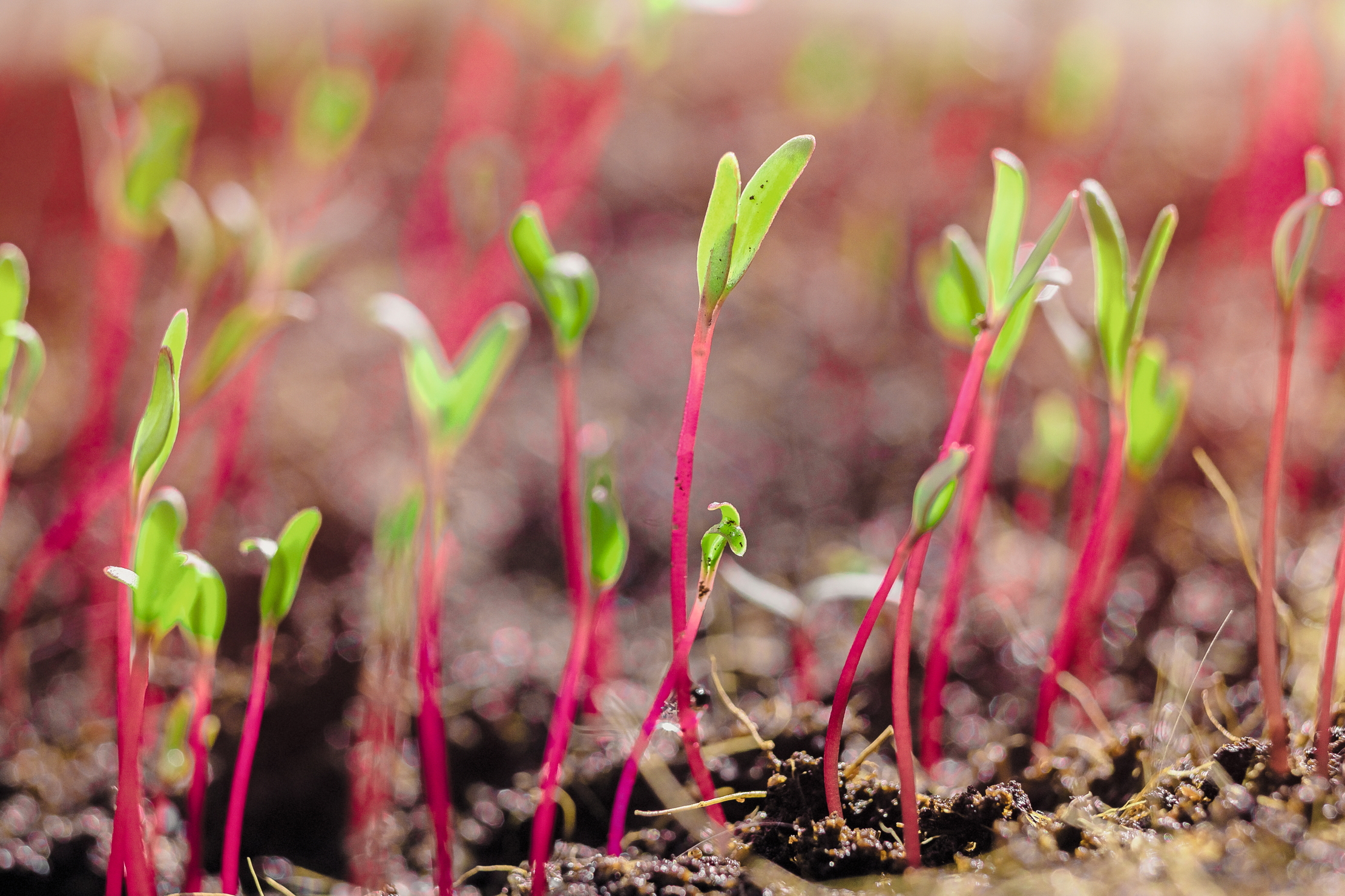Taste explosions: How to grow micro leaves that pack a serious punch
Small in size and quick to mature, these seedlings of coriander, rocket, radish and more are bursting with flavour that belies their size.


Many years ago, leading the garden team at River Cottage in Devon, I had a trick I used on every course, event and garden visit: I’d pull a single 2in-tall coriander seedling from its compost, lift it to my mouth and start chewing, then ask the person at the other end of the 48ft polytunnel to tell me what I was eating. ‘Coriander’ was always the answer. So potent was the aroma, it always found its way to them. No matter how often I did it, I couldn’t quite believe it would work, yet it always did.
Everyone in the group would pick a single one of these micro leaves and, although the walk back through the garden to lunch took 15 minutes, that single seedling would still be giving flavour as we sat down to eat.
As well as coriander, rocket, radish, chervil, sorrel, nasturtium, Florence fennel and basil are among my favourite micro leaves for flavour, whereas others — such as purple cabbage — are superb when grown for their visual impact. Each carries its familiar taste, in a fresher, more intense form. It’s not only intensity of flavour that is so special with micro leaves, it is also about the quality of flavour: there is often an extra clarity, especially apparent with coriander, where that peculiar soapiness that can affect fully grown coriander is entirely absent in micro form.
Another reason for growing coriander (and others that go to seed easily) as micro leaves is that for little cost you have beautifully lively coriander to use in a fraction of the time, rather than wait for your plants to grow to a size where leaves can be harvested, only for the plant to run quickly to seed and lose the clarity of flavour and texture. As micro leaves, you get the flavour quickly and, sown in succession (I do this weekly in summer, when I use most), you need never be without.
You may have noticed these flavourful miniatures in restaurants and cafés, where they are widely used as intense, often colourful, garnishes; so popular have micro leaves become, that they are grown commercially for the hospitality world. Growing them for our own kitchen, however, is easy.
'Don’t be tempted to allow micro leaves to grow beyond a couple of inches or so in height before harvesting: at this size, they are at peak flavour'
I sow them throughout the year, choosing somewhere relatively warm and light: either in the greenhouse or on a sunny windowsill. Depending on available space, I either use seed trays or a yard-long length of guttering, half full of compost, with parcel tape at either end to prevent the compost washing out when watered.
Most often, I divide the sowing into quarters of rocket, radish, coriander and (most often) either basil or mustard frills. Sowing densely on the surface of lightly watered compost, I thinly sprinkle seed compost over the top, misting on most days in order to keep the compost just damp.
Exquisite houses, the beauty of Nature, and how to get the most from your life, straight to your inbox.
Germination and growth rates vary with time of year and varieties chosen, but, as a guide, in the colder months, they most typically take two to four weeks to mature and perhaps half that in summer. Coriander is among the longest to germinate, but it is worth the patience, as it is the best of the bunch in my view.
You can harvest micro leaves in two ways. When they reach 2in in height, lift as many as you need, one at a time, from the compost and brush the roots clean with your fingers; if you want to harvest more, use a sharp pair of scissors to snip the stems just above the compost. This second method denies you the considerable flavour of the soft root system, but if you have more than a few to feed it does save time. How much should you allow? Half a dozen coriander micro leaves sprinkled over a dish will do the job of a small handful of coriander leaves.
Don’t be tempted to allow micro leaves to grow beyond a couple of inches or so in height before harvesting: at this size, they are at peak flavour. As they grow, they lose succulence and that precious clarity of flavour.
Microleaves are best enjoyed raw, as heat steals their intensity. A few turned through a leafy salad brings delightful punctuation, half a dozen over baked fish, a small handful with homegrown tomatoes; wherever you usually like the flavour of the fully grown plant, micro leaves are likely to work even better.
Mark Diacono is an award-winning farmer and writer who grows edibles, usual and unusual, at his home in Devon
Mark is lucky enough to spend most of his time eating, growing, writing and talking about food. He has written fourteen award-winning books, including A Year at Otter Farm and A Taste of the Unexpected (both won Food Book of the Year, and Garden Book of the Year). Known for growing everything from Szechuan pepper to pecans to Asian pears, Mark's refreshing approach to growing and eating has done much to inspire a new generation to grow some of what they eat. He was involved in the early days of River Cottage, appearing in the TV series, and writing four River Cottage books. Mark writes to a global audience on his best-selling Substack: Mark Diacono’s Abundance.
-
 The golden eagle: One of the Great British public's favourite birds of prey — but devilishly tricky to identify
The golden eagle: One of the Great British public's favourite birds of prey — but devilishly tricky to identifyWe are often so keen to encounter this animal that ambition overrides the accuracy of our observations, writes Mark Cocker.
-
 When was the first ever Glastonbury festival? Country Life Quiz of the Day, June 26, 2025
When was the first ever Glastonbury festival? Country Life Quiz of the Day, June 26, 2025Thursday's quiz looks at a landmark date at Worthy Farm.
